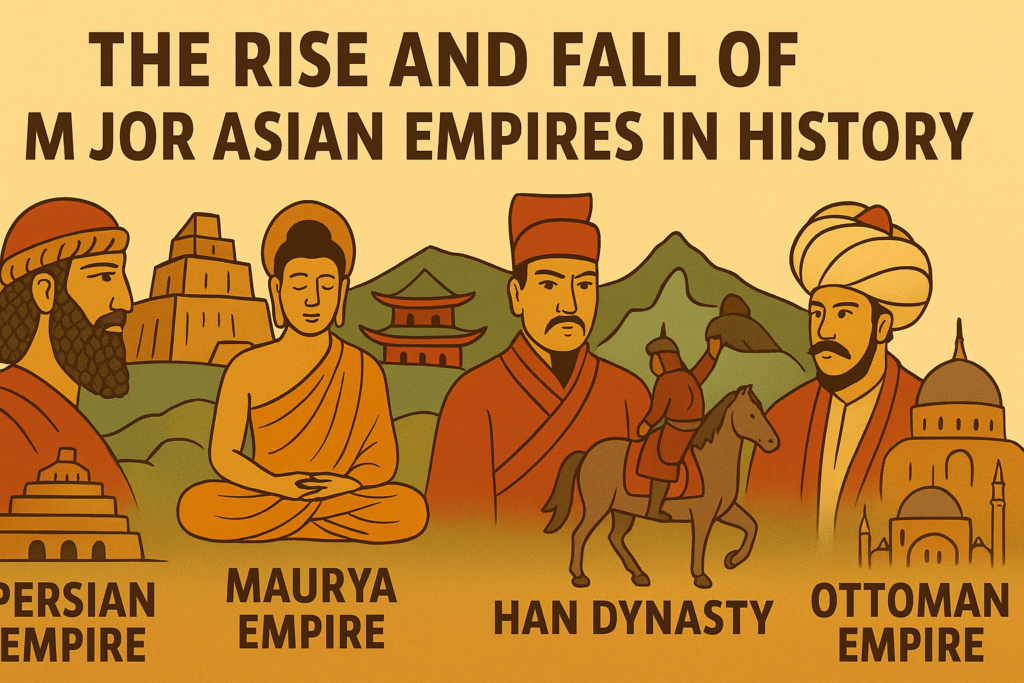Asia’s been this huge spot for power and all sorts of changes over the years. You know, empires popped up everywhere, shining bright for a while. Then they crumbled away. Each one left something behind, like in art or buildings or how folks lived day to day. Anyway, this post dives into the ups and downs of some of the biggest ones from Asian history.
The Persian Empire – Foundation of Power
That Persian Empire, it kicked off as this massive force early on. Cyrus the Great started the Achaemenid part around 550 BCE. The thing stretched all the way from India over to Greece, which is wild when you think about it. Travel back then was a nightmare, communication even worse. But they pulled it off, linking people across huge lands.
Persians stood out for being tolerant, I mean, they let other cultures and religions keep going under their watch. That wasn’t the norm at the time. Still, it all fell apart eventually. Alexander the Great came storming in with his invasions, and that was that.
The Maurya Empire – Unity of India
Over in South Asia, the Maurya Empire showed up from 322 to 185 BCE. It pulled pretty much the whole Indian subcontinent together under one rule for the first time. Chandragupta Maurya got it going. His grandson Ashoka though, he really turned things around and made the real difference.
Ashoka kicked off with some brutal wars, you know, bloody stuff. But then he switched to Buddhism and all about peace. He sent out missionaries everywhere in Asia. That’s how Buddhism spread way beyond India, hitting places like China and Sri Lanka and even Southeast Asia. After he died, though, the empire started fading. Later rulers just couldn’t hold that unity together anymore. It weakened bit by bit.
The Han Dynasty – Golden Age of China
China had the Han Dynasty, running from 206 BCE to 220 CE. That’s one folks still talk about a lot. Even now, people call themselves Han Chinese, which shows how it stuck in their identity so deep.
This was a golden time for inventions, like paper getting made right then. The Silk Road trade really took off too. They built up a solid bureaucracy and leaned hard on Confucianism for running things. Over the years, though, corruption crept in. Peasant revolts happened, natural disasters hit hard. By 220 CE, the whole thing collapsed. That led to hundreds of years where China was split up and divided.
The Mongol Empire – Conquerors of the World
You can’t skip the Mongol Empire when you’re on about Asian powers. In the 13th century, Genghis Khan brought the tribes together. He created the biggest land empire ever. They took over China, Central Asia, Persia. Even pushed into Europe.
Surprising part is, these guys were total warriors, fierce as anything. But they also pushed trade and mixing of cultures across their lands. The Silk Road got safer with them in charge. Ideas flowed, goods moved, people traveled between continents. Still, after Genghis and then his grandson Kublai Khan passed, it started falling apart. Broke into smaller khanates over time.
The Ottoman Empire – A Bridge Between East and West
The Ottoman Empire, people think of it as European sometimes. But it was rooted deep in Asia too. Started around 1299, and it lasted forever, one of the longest ones out there. At its height, it covered Asia, Europe, Africa.
They held key trade routes and stayed strong for centuries. Internal problems built up though, corruption and such. European powers rose up with their colonies. That wore it down. By the early 1900s, after World War I, it just dissolved completely.
Conclusion
These stories of rising and falling, they hit on something real. Nothing sticks around forever. Empires climb high with big ambitions and new ideas, solid leaders. But they drop from greed or corruption, outside attacks, or times just shifting. Even so, their marks are everywhere in Asia today. In languages, cultures, religions. Even how countries are bordered now.
Asia’s history isn’t only dates and kings. It’s about human dreams and screw-ups shaping the world we got today.


